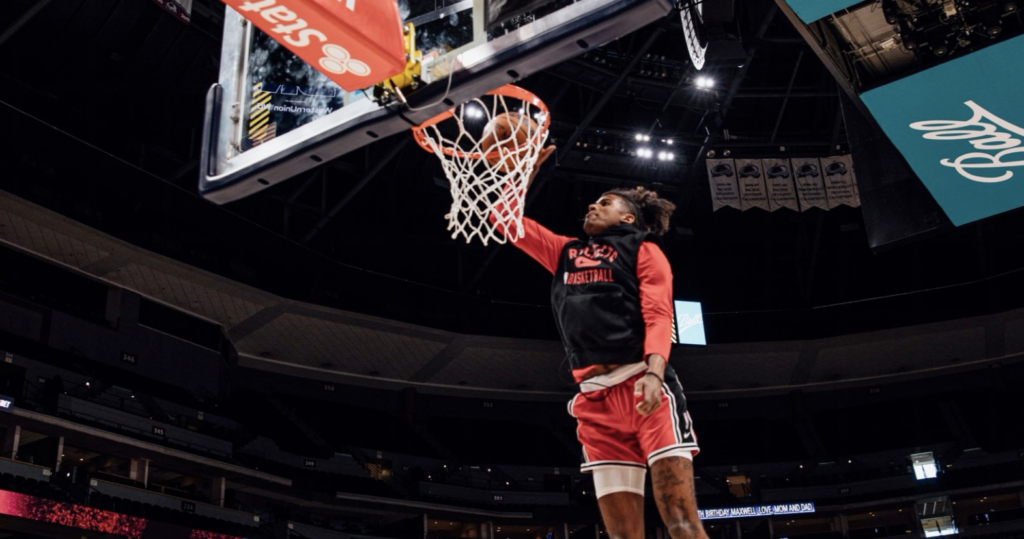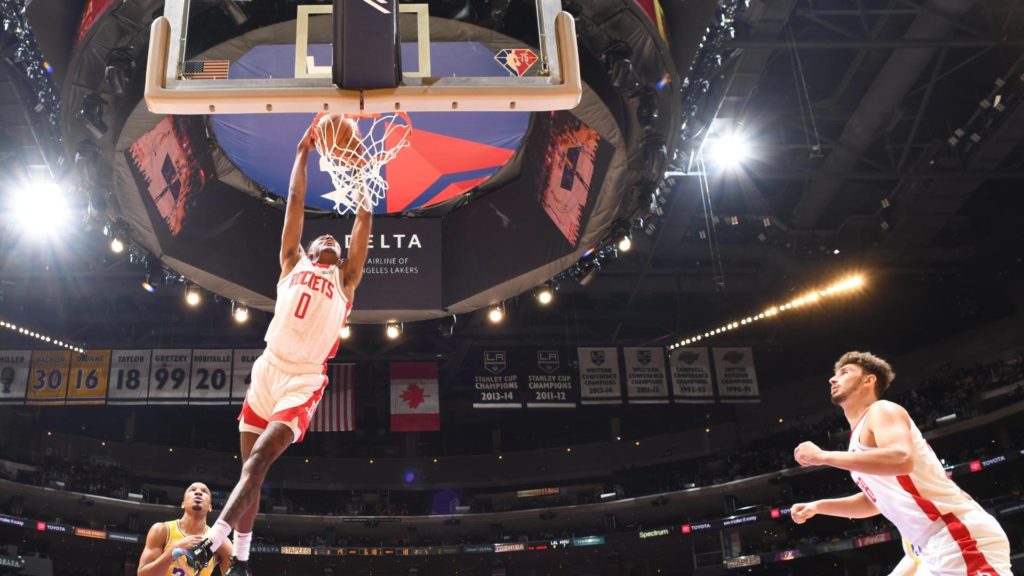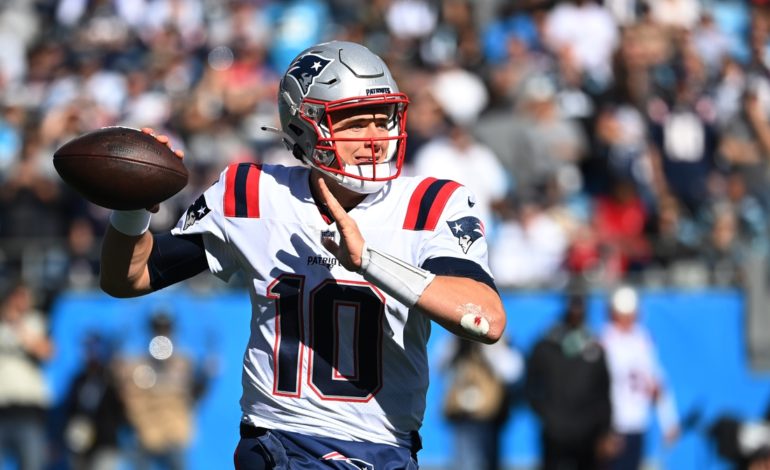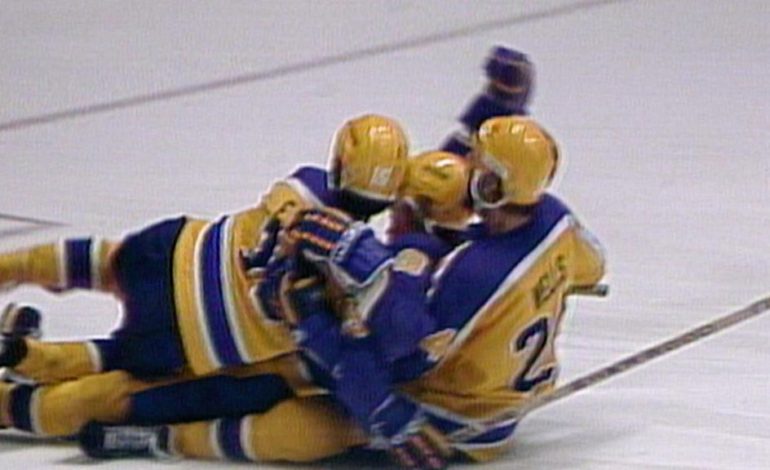The Houston Rockets are in the midst of a hard West Coast Roadtrip and a six-game losing streak at the time of writing this. The ‘Kets have hit a rough patch, and from a distance, it looks like the season is headed to the wayside again.
But as we mentioned to start the season, this year will be about a lot more than wins and losses for the Rockets. And in terms of development, the Houston Rockets are clearly getting better. From game to game they’re getting better on both ends and watching the young guys gain confidence is truly special. Jalen Green’s moments are already becoming more regular. KJ Martin is earning his stripes as part of the rotation. Jae’Sean Tate has hustled his way into a starting role.
The Houston Rockets aren’t winning, but they’ve played toe-to-toe with a half-dozen Western Conference contenders. They took the recent NBA Champion LA Lakers to the wire and held a second-half lead over the defending Western Conference Champion Phoenix Suns. They hung with the Warriors 24 hours after playing the Nuggets to the final buzzer. The Houston Rockets must be getting better, but what’re they getting better at?
The Improvements

Jalen Green
The aforementioned growth of Jalen Green is becoming clear to the naked eye. Green’s rainbow step-back three over Anthony Davis from well behind the three-point line caught the nation’s attention in a way rare for non-game-winning shots. As incredible as that moment was, the footwork he utilized there is what’s become his biggest tool. Green has the speed and quickness of a generational athlete. What he’s shown as the season has gone on is that he can manipulate the defense by shifting gears on a dime and taking advantage where try to compensate for the speed difference. Green’s jumper will continue to develop, but he can clearly separate on step-backs and create space already.
In large part, Green owes his great shooting nights thus far to his year in the G League. Instead of heading to “Intro to Sociology,” or logging into an online lecture on algebra, Green was a professional basketball player for his year prior to the NBA. A guy that left high school as a tremendous athlete was able to spend a year perfecting his craft. As Green’s three continue to level out and be more consistent, defenses won’t be able to cover him with a single person. As he’s shown in glimpses when other defenders pay attention to Green he can slip the ball past them to open Rockets.
Green’s athleticism clearly separates him from the pack. As early as his first Summer League game in a Houston Rockets’ uniform, Green has very clearly been one of the best athletes in the league. His sudden burst is second to none, and every game seems to have some moment leaving the crowd in shock and awe. When he takes off for a fast break, everyone scrambles to get their phones out to record it as quickly as they can. Green’s an athlete that can lift a franchise, and Houston’s got a lot to work with while he is on the roster.
Kevin Porter Jr.
While he has always been a scorer, Kevin Porter Jr. appears to be learning the role of a point guard. He opened the season with a nine-turnover performance and has had a couple of other 5+ turnover games, but there are moments where it’s clear he’s studied film and is getting better. Between Laker games, Porter Jr. did a noticeably better job of keeping his dribble alive. Porter, as a two-guard, has a tenancy to pick the ball up early. When he picks the ball up, he’s stuck, and thus he is much more likely to throw the ball away on a turnover. After the second Laker game and the Suns game, it was evident someone had gotten in his ear about it.
By the time the Rockets played the Nuggets and the Warriors, it appeared that the staff had really done a good film study with Porter. Instead of picking up his dribble between the elbows of the lane, he was decisive. He still began his attack heading to the midrange, but he was able to shift into either scoring threat or kick the ball out. Porter Jr. has a long way to go before he is a problem-free point guard, but his growth indicates Houston wasn’t crazy to begin converting him.
Alperen Sengun
Alperen Sengun is a bonafide NBA player, and could very soon be a starter. At the time of writing this, Sengun has started just two of ten games and is averaging just 19.3-minutes per game. He’s not quite hitting the ten-points-per-game mark, and his total-rebound percentage (measures how many available rebounds he gets while on the floor) has ranged from 3.4-percent to 17.8. But traditional stats and analytics don’t tell the story of the growth of Sengun.
Sengun is playing much more comfortably at NBA speed. He is quicker to take an open three or drive by a defender with a sloppy closeout. Sengun is seeing the floor clearer and is able to whip passes between defenders with ease. Without the ball, he has become a constant battler on the boards and in the interior. He’s adjusted quicker to the NBA game than anyone could expect the Turkish teenager would. While the 15-point 15-rebound performance from the Summer league hasn’t been repeated yet, Sengun’s impact has only grown as the season has gone on.
Jae’Sean Tate
It would be hard to make an All-NBA-Defensive Team for a team with a .100 win percentage, but Jae’Sean Tate is making the argument. Tate’s stout defense has drawn a number of different assignments. He’s covered LeBron James and Anthony Davis in the same game, he’s swapped between Michael Porter Jr. and Nikola Jokic between quarters. There’s no matchup Tate shies away from.
What’s improved with Tate this year has been his motor. Tate was one of Houston’s highest energy players a year ago, but he is back and in better shape. Tate is the definition of relentless. Every quarter, he’s sprawled across the floor, diving into the stands and snatching rebounds away from players nearly a foot taller than him.
The Houston Rockets haven’t won many games, but Tate’s versatility has been instrumental in the success they’re measuring elsewhere. Tate’s playing with a winning effort and, while the Rockets work towards a winning execution, that’s what’s keeping them in the game.
The Things to Work On

Before diving too deploy into things to work on, a note on the stacking of losses…
The truth is, in a lot of ways, early-season losses by 13 or fewer points to top-tier competition are to be expected. At this stage in the rebuild, playing a competitive game down to a few possession with the league’s best is a great place to be. Houston has just three players from their team a year ago, and their roster features four teenagers. They’re going to improve by leaps and bounds by March, and if they’re already competitive? That sets up well for this spring and next season.
That doesn’t mean fans want to see losses. There’s no moral victory when you’re comparing at the water cooler. But fans who don’t see that’s happening also probably didn’t have a stomach for a rebuild. That’s understandable; this is a relatively new place for the Rockets. But that doesn’t mean this isn’t part of the process.
And if this is too ugly for ya? That’s fine. But this is what starting at ground zero is, and that’s what it’s going to take.
Rim Defense
In many ways, the young Alperen Sengun is the best rim defender. When a nineteen-year-old is the best on the roster at something crucial, something is amiss. Christian Wood has been out-physicaled by bigs, and Daniel Theis has been slow on rotation from the help side. Jae’Sean Tate and David Nwaba are tough, but they’re both under six-foot-five.
Houston is playing at the second-fastest pace in the league, and is still in the middle third of the league in most defensive categories. In conjunction, that’s impressive. But in actuality, Houston is struggling to keep defenders away from the rim. Houston’s perimeter defense is funneling drivers and no one is able to both meet and contest.
This is where KJ Martin appears to fit best. While he isn’t a traditionally built “big,” Martin is a bonafied rim protector. His laundry list of seven-footers he’s met at the rim is big, his 38.5 inch vertical leap (at the 2020 NBA combine) is bigger. Martin is a vertically explosive athlete, but the hole when he is on the floor is in getting back out to the perimeter. When helping off of the backside he does a great job at the rim, but he sprints back out at his man at the three-point line. Instead of a burst-gallop-break down, as is a normal NBA recovery, he just bursts. His man can then go by him and repuncture the defense.
Martin is not the only young defender who struggles here, nor is he the only Rocket who struggles to balance all of the things in NBA defense, but he is where Houston’s hope lies. His growth will be in his technique. Martin already does the hard part; he is present as a helpside rim protector. He is athletic enough to recover. The transition from “decent” or “good” to “great” will come when Martin can truly play both the rim and his man on the backside.
Until then, the Houston Rockets will struggle with a slow-footed Sengun trying to make the same maneuver, a thin Christian Wood functioning as a speed bump, or a stiff Daniel Theis who plays with good technique but is not as athletic as the aforementioned trio. Pick your poison, but I tend to choose youth.
Rotations – Guards
This is an issue of abundance, and one that only would have been exacerbated had John Wall been a playing player (as opposed to a mentoring and coaching one) in the lineup. The Houston Rockets cannot seem to find the magic number of minutes distributed at the right time amongst. Houston has started Kevin Porter Jr. and Jalen Green, thus bringing in Eric Gordon, DJ Augustin, Armoni Brooks, and Josh Christopher off of the bench. That’s five players for two spots in a 48-minute game, because Houston also has a number of true forwards to play as well.
Distributing those 96 minutes can be tricky. Whispers are the Houston and Gordon want to split amicably, but it’s hard to sell other teams on Gordon’s health without playing him significant minutes and in key moments. But playing him for chunks of time to prove his health also means the younger ‘Kets don’t get to play then. If and when Gordon is traded, presumably for assets, Houston can focus their other guard spot on Brooks and Christopher. Both Brooks and Christopher need more minutes on the floor to develop into NBA-level perimeter defenders. Brooks is still learning to use his speed to make up for what he lacks in size, and Christopher is in his first month as a professional and still adjusting to the speed of defensive rotations. But neither can learn that from the sideline, and that means they need the minutes that currently aren’t there/
The solution Houston is slowly working towards is to never not have one of Porter Jr. and Green on the floor because they’re the two young offensive creators the Rockets are developing. Much like how D’Antoni rotated Chris Paul and James Harden in 2017-18, the two need to have time together and apart to maximize their talents. Those teams rotated Gerald Green, Eric Gordon, Trevor Ariza, and Luc Mbah a Moute through the other guard spot and a forward spot… And Houston is currently spinning more guys through less spots.
No one envy’s the decisions Coach Silas has to make, but that’s for him to do. Things will get easier if Gordon and other veterans find their way to other contenders… but for now, there are too many guards that need minutes. Minutes are finite, and that’s creating a rotations problem.
Rotations – Bigs
While the rotation of “bigs” makes more sense, it is still concerning. Christian Wood is best as a roll man with options. In several versions of the Rockets Round-Ups, we’ve mentioned that he is great as a roller at all three levels. Wood can popfor three, mid-roll for creation, and deep-roll for a lob or rim finish. The issue has been that with Theis and Sengun on the floor Wood’s triple threat has really been limited to a single: popping. Theis is shooting the ball better than Rockets cans could have ever expected, and Sengun appears to be quicker to shoot than he was a month ago but, with them on the floor, their defender can sit in the help side and prevent the mid and deep-rolls. If Theis becomes a reputational 36+-percent three-point shooter, or Sengun becomes confident enough to truly be a catch and shoot threat.
From a step removed, it does appear the better bet is Sengun’s development. He’s ten years younger than Theis, and Theis’s three-point percentage has been as low as 28-percent and as high as 38-percent across his career. By the age 29, while he can get better, Theis’s game is a finished product: he’s a tough hustle guy who rebounds well, that you have to “token” cover from three, and that rotates the ball well on offense.
When Houston plays Jae’Sean Tate or KJ Martin at the “four-spot,” the floor opens up more. While fans are clamoring for “small ball” lineups with Wood at the five, those lineups suffer in the aforementioned rim protection and slow the development of Theis’s fit and Sengun’s potential. Speed is fun, and KJ Martin has earned more minutes than he’s currently playing… but the issue is yet another log jam.
For more on sports, sneakers, and fandom, follow me @painsworth512 for more. Give our podcast “F” In Sports a listen wherever you listen to podcasts! Be sure to check our NEW weekly basketball show, The Midweek Midrange, on YouTube,Twitter, and Instagram!






